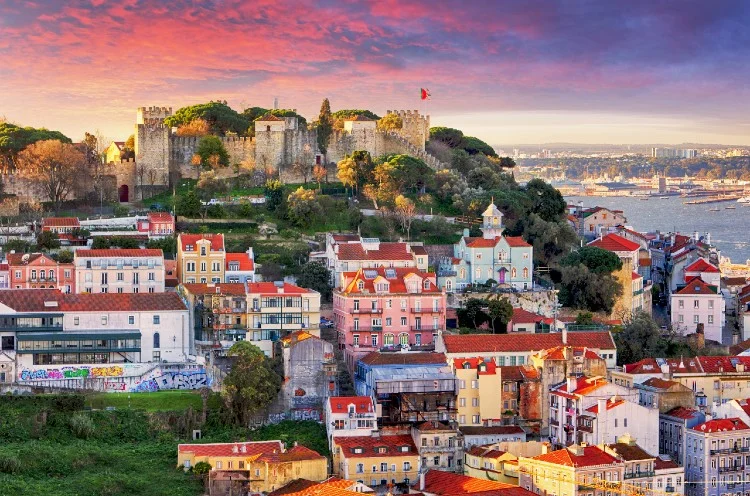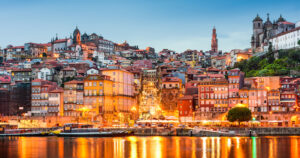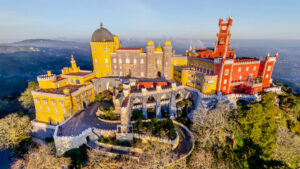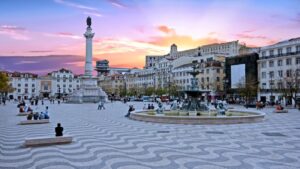Portugal has a lot of cultural experiences that are unique to it because of its rich history, traditions and natural beauty. This guide is about some of the most peculiar cultural experiences in Portugal.
Lisbon and Porto’s Fado Music
Fado which means ‘fate’ in English is one of the genres of Portuguese music that can be classified as traditional. It is usually characterized by mournful tunes and lyrics which often talk about the sea or life on shore. There are many places where you can listen to this type of music being performed live including fado houses located in Alfama district (Lisbon) and Ribeira area (Porto). The songs are typically accompanied by guitar played with fingers as well as sung in very low voice full with emotion reflecting saudade – Portuguese word for longing or nostalgia.
Custard Tarts (Pasteis de Nata)
A custard tart known as pastel de nata is a popular Portuguese pastry made from egg yolks, sugar, cream and flour filled into puff pastry cups before baking them until they turn golden brown on top while remaining soft inside. The best place to try these treats is at Manteigaria which sells them fresh throughout day dusted with icing sugar together with cinnamon sprinkles giving it an amazing taste.
Traditional Festivals
Every year different cities across Portugal host various festivals celebrating local culture through music, dance performances among others things; especially during summer months when weather conditions favour such events take place outdoor spaces like parks or even streets themselves become stages for shows such samba parade during carnival lisbon etc.Festas de Sao Joao also called Oporto festival held every June characterized by street parties marked release colourful paper balloons into air along fireworks display lots food drink stalls lining streets making merry late night hours till dawn breaks forth again next day.
Decorative Tiles (Azulejos)
Azulejo refers to painted tin-glazed ceramic tilework which was introduced into the Iberian Peninsula by Moors influenced medieval Islamic art during 13th century but reached its peak popularity in early 16th century when Portuguese king Manuel I used them for decorating his palace walls giving rise to term ‘Manueline’. These tiles are commonly used outdoors on buildings such as churches or public buildings often depicting scenes from history or religion some having geometric patterns while others have figurative images like animals, plants etc. There is National Tile Museum located Lisbon where you can see variety examples different types designs colours shapes sizes made over centuries.
Port Wine Tasting at Porto
One cannot leave Portugal without tasting their famous Port wine produced in Douro Valley region near city called porto hence name given this sweet red fortified drink made with grapes grown along river banks surrounding area considered world heritage site UNESCO since 2001; best way do that would be visiting one many historical cellars located Vila Nova Gaia where guided tours offered cellar master explains process involved making various kinds port wines available for sampling them afterwards if interested person can proceed purchasing bottle souvenir back home as reminder time spent touring cellars learning about history behind making these unique beverages.
Madeira’s Levadas Exploration
Levada walks are one popular activity among tourists visiting island Madeira archipelago part Portugal; these man-made irrigation channels serve carry water from mountains down lower lying regions especially agricultural areas along way creating scenic hiking trails that pass through beautiful forests sometimes crossing deep valleys offering panoramic views ocean beyond typically surrounded lush vegetation due high rainfall levels received annually which supports growth diverse species plants animals also contributes natural beauty islands themselves further enriched by human activities like farming terracing etc done over centuries thus blending well with overall landscape making it perfect spot anyone interested nature history culture alike.
Traditional Crafts Discovery
Artisanal crafts forms significant aspect country’s cultural heritage therefore any person wishing discover more this aspect should take time explore various regions where these skills have been passed down generations through hands-on practices participation such as visiting markets selling handmade products like ceramics, textiles, embroidery among others; caldas da rainha town known for its pottery while guimaraes region has earned reputation weaving industry producing quality textiles engaging local artists enables visitors gain deeper appreciation artistic traditions associated with different parts Portugal.
Go to Sintra’s Historic Town
Sintra is a beautiful town near Lisbon that is known for its romantic buildings and gardens. Visit the magical Pena Palace, the Moorish Castle, and Quinta da Regaleira which all represent different periods in Portuguese architectural history and design. Its fairy-tale atmosphere combined with historical importance makes Sintra one of Portugal’s most interesting cultural experiences.
Traditional Portuguese Gastronomy
What defines Portuguese cuisine are strong flavors and usage of local ingredients. Restaurants or markets can offer you a taste of traditional dishes such as salted cod fish (bacalhau), green soup (caldo verde) or pork sandwich (bifana). Every region has its own food culture so it’s worth visiting some places around and participating in food festivals to get an idea about what real Portuguese gastronomy is like.
Moorish Heritage in Algarve
The Algarve region boasts beautiful beaches but it also has a lot of lively towns and cities with rich Islamic history that cannot be overlooked while traveling here.The historical fortresses, buildings in Lagos or Silves will help you understand more about Moors’ influence on architecture as well as trade centers represented by traditional markets there.The unique design thinking coupled with cultural practices influenced by this people offers different angles through which we could look at Portugal’s past diversity.
Unique cultural experiences reflect rich heritage throughout Portugal where each place has its own story expressed through music, art craft or even landmarks left behind over centuries.These sites allow us not only learn about ourselves but also appreciate those who came before us therefore they deserve our respect




